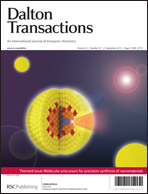We investigate the synthesis of accessible calix[4]arene-bound gold clusters consisting of open “coordinatively unsaturated” active sites, using a comparative approach that relies on calix[4]arene ligands with various upper- and lower-rim substituents. In contrast with a reported Au(I)-tert-butyl-calixarene phosphine complex, which exhibits a single cone conformer in solution, the H upper-rim analog exhibits multiple conformers in solution. This contrasts with observations of the tert-butyl upper-rim analog, which exhibits a single cone conformer in solution under similar conditions. In the solid state, as determined by single-crystal X-ray diffraction, both H and tert-butyl upper-rim analogs exhibit exclusively cone conformer. A detailed structural analysis of these two solid-state structures highlights a CH–π interaction involving a methoxy lower-rim substituent and phenyl substituent on P as the key feature that enforces a tight configuration of Au(I) atoms on the same side of the calix[4]arene lower-rim plane. We hypothesize that such a configuration promotes chelation of the ligand to a gold surface and facilitates the synthesis of small Au11-sized clusters after reduction of both complexes. The new cluster, like the one reported with the tert-butyl analog, has an extraordinary 25% of surface atoms that are open and accessible to a 2-NT (2-naphthalenethiol) probe in solution. We also investigated the effect of calix[4]arene lower-rim substituents that coordinate to the metal, by using N-heterocyclic carbene (NHC) functional groups rather than phosphines. Four small (<1.6 nm diameter) calix[4]arene NHC-bound gold clusters were synthesized, including three using novel calix[4]arene NHC ligands. The smallest calix[4]arene NHC-bound Au cluster consisted of a 1.2 nm gold core, and its number density of accessible and open surface sites was measured. This required development of a new titration method for open sites on gold clusters, using a SAMSA fluorescein dye molecule, which excites and emits at lower energy relative to the previously used 2-NT probe. The number density of open sites on the new calix[4]arene NHC-bound gold cluster measured by the SAMSA fluorescein probe strongly supports the generality of a mechanical model of accessibility, which does not depend on the functional group involved in binding to the gold surface and rather depends on the relative radii of curvature of bound ligands and the gold cluster core.
![Graphical abstract: Accessible gold clusters using calix[4]arene N-heterocyclic carbene and phosphine ligands](/en/Image/Get?imageInfo.ImageType=GA&imageInfo.ImageIdentifier.ManuscriptID=C3DT50804H&imageInfo.ImageIdentifier.Year=2013)
You have access to this article
 Please wait while we load your content...
Something went wrong. Try again?
Please wait while we load your content...
Something went wrong. Try again?
![Graphical abstract: Accessible gold clusters using calix[4]arene N-heterocyclic carbene and phosphine ligands](/en/Image/Get?imageInfo.ImageType=GA&imageInfo.ImageIdentifier.ManuscriptID=C3DT50804H&imageInfo.ImageIdentifier.Year=2013)

 Please wait while we load your content...
Please wait while we load your content...